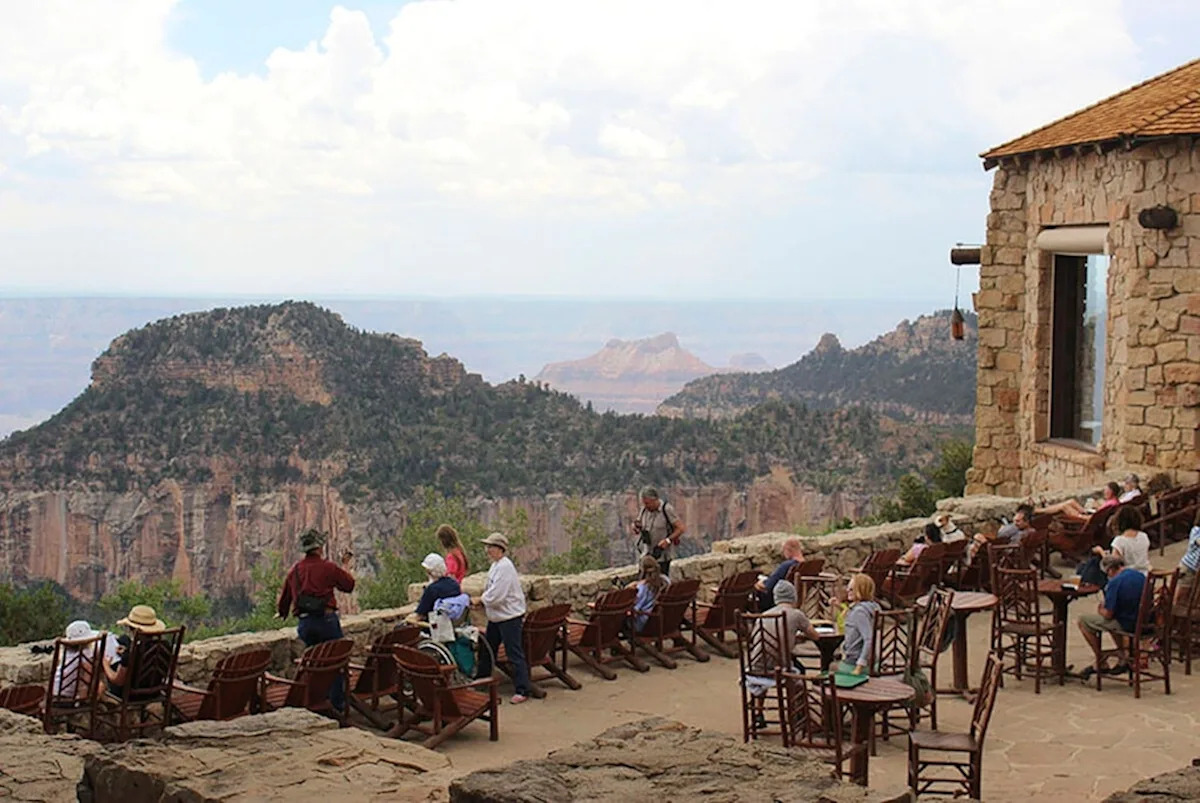The lodge is one of approximately 50 to 80 structures that have been lost.
Why it matters
- The destruction of the Grand Canyon Lodge highlights the increasing vulnerability of historic sites to climate-related disasters.
- The wildfire's impact extends beyond the immediate loss of structures, affecting local ecosystems and tourism in the region.
- This incident underscores the need for enhanced wildfire management practices and policies in fire-prone areas.
A significant wildfire in the North Rim area of the Grand Canyon has resulted in the loss of the historic Grand Canyon Lodge, a beloved structure that has served as a gateway for visitors exploring one of the nation’s natural wonders. The fire, which has ravaged the region, has destroyed approximately 50 to 80 buildings, raising concerns about the long-term implications for both the environment and tourism.
The Grand Canyon Lodge, established in the early 20th century, was not only a place for visitors to stay but also a symbol of the rich history surrounding the Grand Canyon. Its loss is felt deeply by both conservationists and the local community, who recognize it as an integral part of the Grand Canyon's charm and allure. The lodge's rustic architecture and stunning views made it a popular destination for nature lovers and sightseers alike, and its absence will undoubtedly alter the landscape of visitor experiences.
Fire officials have reported that the blaze, which has spread rapidly due to dry conditions and strong winds, has prompted extensive evacuation measures in the surrounding areas. Firefighters are working tirelessly to contain the flames, which have threatened not only the lodge but also other vital structures and natural habitats. As they battle the fire, officials have also focused on protecting the unique flora and fauna that inhabit the region, which is known for its biodiversity.
The destruction of the Grand Canyon Lodge is part of a broader trend of increasing wildfire activity across the Western United States, attributed largely to climate change. Rising temperatures and prolonged drought conditions have created an environment conducive to wildfires, resulting in more frequent and intense blazes. In recent years, several historic sites and natural reserves have faced similar threats, prompting discussions about the need for improved forest management and fire prevention strategies.
Officials from the National Park Service have expressed their commitment to rebuilding efforts once the fire is contained, emphasizing the importance of preserving the cultural heritage of the Grand Canyon. However, the timeline for restoration remains uncertain as teams focus on immediate firefighting efforts and assessing the overall damage.
Community members and environmental advocates are calling for a comprehensive review of wildfire response protocols, arguing that a proactive approach is essential to protect both human lives and natural resources. They stress the need for collaboration among federal, state, and local agencies to develop strategies that not only address the current crisis but also prepare for future challenges posed by climate change.
In the wake of the fire, the local tourism industry is bracing for a significant impact. The Grand Canyon attracts millions of visitors annually, contributing substantially to the economy of the surrounding areas. The loss of the lodge and other facilities could discourage tourists from visiting, leading to a ripple effect on local businesses that rely heavily on the influx of visitors.
As the firefighting efforts continue, the community remains hopeful for a swift resolution to the crisis. Many are coming together to support firefighters and affected families, demonstrating resilience in the face of adversity. The situation serves as a stark reminder of the ongoing battle against wildfires and the urgent need for sustainable practices that safeguard both historic landmarks and natural ecosystems for future generations.
The Grand Canyon Lodge, once a proud fixture of the North Rim, is a poignant loss for historic preservation and environmental advocates alike. As the flames recede and recovery plans are formulated, the focus will undoubtedly turn to how best to protect and restore this iconic landmark, ensuring that it remains a part of the Grand Canyon's storied history.











